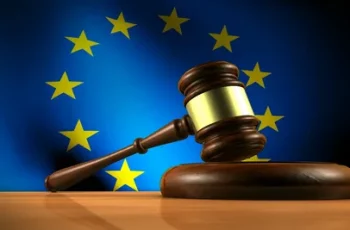Now in crypto related news concerns around on-chain censorship on Ethereum continue to increase, this is because an increasing number of Ethereum blocks are complying with OFAC sanctions.
This means they don’t contain transactions related to Tornado Cash.
For those unfamiliar Tornado Cash is a controversial privacy protocol that was sanctioned by the US department of the treasury earlier this year.
Various Ethereum applications and services subsequently complied with the sanctions leading to concerns that Ethereum validators would follow suit post merge.
Well it looks like that is exactly what they’re doing.
According to the MEV watch tool all over 55 percent of recent Ethereum blocks were compliant with the sanctions.
To put things into perspective just 15 percent of Ethereum blocks were compliant when the merge occurred in mid-September, so far though it looks like not a single Ethereum transaction has been censored.
This makes sense given that 45 of Ethereum blocks still include all ETH transactions regardless of their origin.
Censorship of Ethereum transactions probably won’t be possible until that percentage is much lower.
What really caught the crypto Community off guard however was Ethereum Creator Vitalik Buteran’s apparent 180 on on-chain censorship.
Vitalik recently said that Ethereum validators that sensor blocks should be tolerated yet two months ago, he said that validators that sensor blocks should be slashed.
There is some logic to Vitalik’s apparent about face, however that’s because a significant amount of ETH is being staked through centralized entities such as Coinbase.
If Coinbase senses Ethereum transactions then its Coinbase’s users that would suffer the slashing for the actions of the company.
In any case this concerning rise in on-chain censorship has led to speculation that US Regulators could start applying other regulations to Ethereum.
Cointelegraph recently speculated that US Regulators could require US users to complete KYC to stake on Ethereum, which is a terrifying thought.
It’s an especially terrifying thought when you remember that the ETH currently being staked on Ethereum will be locked until the Shanghai upgrade which is expected in late 2023.
I would not put it past, Regulators like the SEC to try and require those already staking ETH to complete KYC to withdraw it.
Now my personal fear is that US Regulators will require stablecoin issuers to collect KYC on every crypto wallet that’s holding their tokens, this is something that could be introduced without on-chain censorship and the worst part is that it would probably do even more damage to Ethereum.
As a quick aside you should know that Ethereum developers recently kicked off the Shandong test net which will prepare Ethereum’s Beacon chain for withdrawals of staked ETH.
It seems the news didn’t get that much attention which is a shame given that Shanghai is going to be a very significant upgrade.
Anyways the Silver Lining is that Ethereum’s so-called compliance means that institutional investors are more comfortable investing in ETH.
Case in point Fidelity announced that it’s going to start letting its clients invest in ETH later this week and I expect other asset managers like BlackRock to follow suit.
This will be insanely bullish for ETH in the long term but at what cost is it worth having a 10K or 20K ETH if ethereum becomes a banker coin? some would say yes but I would say no, that’s because in the actual long term any crypto that becomes a part of the financial system is doomed to die with it.



